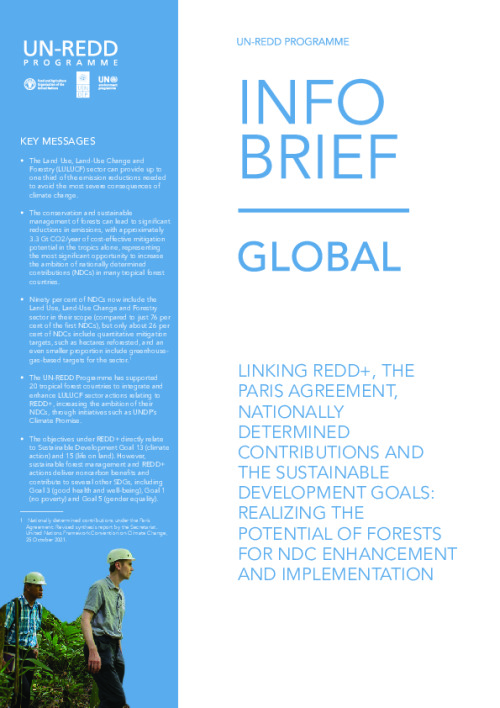Linking REDD+, the Paris Agreement, Nationally Determined Contributions and the sustainable development goals

KEY MESSAGES
• The Land Use, Land-Use Change and Forestry (LULUCF) sector can provide up to one third of the emission reductions needed to avoid the most severe consequences of climate change.
• The conservation and sustainable management of forests can lead to significant reductions in emissions, with approximately 3.3 Gt CO2/year of cost-effective mitigation potential in the tropics alone, representing the most significant opportunity to increase the ambition of nationally determined contributions (NDCs) in many tropical forest countries.
• Ninety per cent of NDCs now include the Land Use, Land-Use Change and Forestry sector in their scope (compared to just 76 percent of the first NDCs), but only about 26 percent of NDCs include quantitative mitigation targets, such as hectares reforested, and an even smaller proportion include green house gas-based targets for the sector.
• The UN-REDD Programme has supported 20 tropical forest countries to integrate and enhance LULUCF sector actions relating to REDD+, increasing the ambition of their NDCs, through initiatives such as UNDP’s Climate Promise.
• The objectives under REDD+ directly relate to Sustainable Development Goal 13 (climate action) and 15 (life on land). However,
sustainable forest management and REDD+ actions deliver noncarbon benefits and contribute to several other SDGs, including Goal 3 (good health and well-being), Goal 1(no poverty) and Goal 5 (gender equality).
Download the resource
Size: (5.099 MB)


